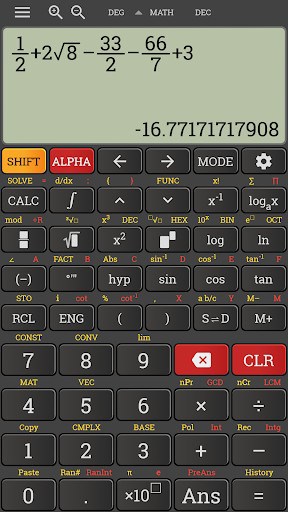
As we’ll talk about later, many of these questions won’t necessitate the use of a calculator at all! If you come across a question that stumps you, skip it and spend your precious time getting the easy ones out of the way so you can return to the tricky one later.

You won’t be dinged more for missing an “easy” question instead of a hard one, and you won’t be dinged more for guessing on a tricky question instead of just leaving the bubble blank. Here’s the thing: all SAT Math questions are worth the same. Tips to Ace the SAT Math Calculator Section Many of our tips for the no-calculator section actually apply to the calculator section, too!
FUNCTION MATH CALCULATOR HOW TO
If you’d like to individually prepare for both portions of this test (or even feel the need to focus more on the no-calculator section), check out our other post, How to Conquer the Math No-Calculator Section of the SAT. The no-calculator section only has 5 grid-in questions. Most of them will be multiple choice, but you’ll have 8 grid-in questions for your calculator-allowed student-provided responses. By contrast, the no-calculator section includes only 20 questions to be answered in 25 minutes. The SAT Math calculator section includes 38 questions to be answered in 55 minutes. We’ve even linked extra resources towards the end so you’ll have everything you’ll need to succeed! In this post, we’ll go over the math calculator section, explaining what to expect as well as tips for success. It tests your fundamental understanding of concepts like linear inequalities, graph/data interpretation, quadratic functions, geometry, and trigonometry. In short, the calculator section tests the process that gets students to the result.

The calculator section is designed to test your understanding of actual mathematical concepts, without so much potential for mechanical error. Unlike the ACT, the SAT only allows students to use calculators on some of the math problems.

Tips to Ace the SAT Math Calculator Section.Overview of SAT Math Calculator Section.


 0 kommentar(er)
0 kommentar(er)
